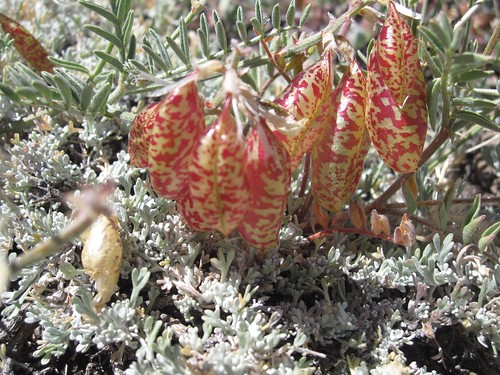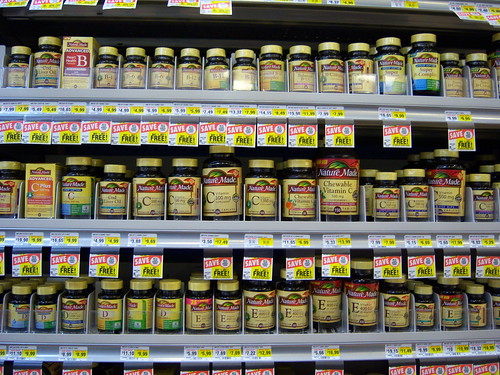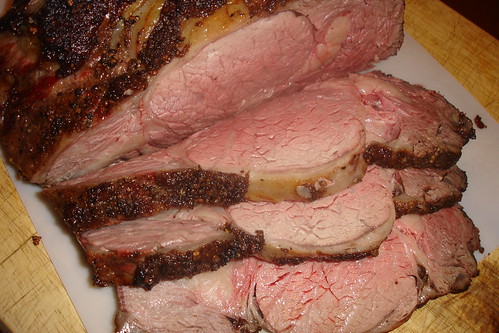Favorite Articles of the Moment
Disclaimer
• Your life and health are your own responsibility.
• Your decisions to act (or not act) based on information or advice anyone provides you—including me—are your own responsibility.
Recent Articles
-
We Win! TIME Magazine Officially Recants (“Eat Butter…Don’t Blame Fat”), And Quotes Me
-
What Is Hunger, and Why Are We Hungry?
J. Stanton’s AHS 2012 Presentation, Including Slides
-
What Is Metabolic Flexibility, and Why Is It Important? J. Stanton’s AHS 2013 Presentation, Including Slides
-
Intermittent Fasting Matters (Sometimes): There Is No Such Thing As A “Calorie” To Your Body, Part VIII
-
Will You Go On A Diet, or Will You Change Your Life?
-
Carbohydrates Matter, At Least At The Low End (There Is No Such Thing As A “Calorie” To Your Body, Part VII)
-
Interview: J. Stanton on the LLVLC show with Jimmy Moore
-
Calorie Cage Match! Sugar (Sucrose) Vs. Protein And Honey (There Is No Such Thing As A “Calorie”, Part VI)
-
Book Review: “The Paleo Manifesto,” by John Durant
-
My AHS 2013 Bibliography Is Online (and, Why You Should Buy An Exercise Physiology Textbook)
-
Can You Really Count Calories? (Part V of “There Is No Such Thing As A Calorie”)
-
Protein Matters: Yet More Peer-Reviewed Evidence That There Is No Such Thing As A “Calorie” To Your Body (Part IV)
-
More Peer-Reviewed Evidence That There Is No Such Thing As A “Calorie” To Your Body
(Part III)
-
The Calorie Paradox: Did Four Rice Chex Make America Fat? (Part II of “There Is No Such Thing As A Calorie”)
-
Interview: J. Stanton on the “Everyday Paleo Life and Fitness” Podcast with Jason Seib
|
While city dwellers were rioting in the UK, the wildflowers were rioting in the Sierras. Though it arrived in late August, over a month late, we had a truly astounding wildflower season this summer.
Wildflower Riot!
 In the High Sierra, there's not much summer in which to bloom...and what with the late snows, everything went off all at once.  Lupines! Most alpine flowers have no scent, but lupines smell wonderful.  Mule's ears. You'll find entire hillsides covered with these. Yes, mountain bikers stop to smell, photograph, and otherwise appreciate the flowers. Riding allows people with families to support, and who don’t have time for multi-day backpacking trips, to see backcountry they could never see otherwise…and there are a lot of people with bad knees who simply can’t hike long distances anymore, especially with a heavy pack. Someday you’ll probably be one of them.
Please consider that the next time you’re advocating for wilderness designation, which singles out bicycles for removal while permitting boats, ski touring gear, climbing gear, and commercial horsepacking operations…and often grandfathers in everything from airstrips to snowmobiles to jet skis to operating mines. (Here’s a startling list of wilderness ‘exceptions’.)
 Daisies...or something that looks like a daisy. (I'm not a botanist.) Yes, they're a bit purplish.  Riding on the alpine tundra and into the void.  Apparently the aliens have a foothold up here.  If I were a bee, this would be heaven. It was impossible to be more than eight inches from a flower. (Some photos were taken by my friend Jeff.)
A Few Observations About The State Of The Paleo Community
- The first problem with already knowing everything is that we can’t learn anything.
- The second problem is that if new information finally sneaks around or smashes through our protective shield of omniscience, it’s difficult to explain why today’s definitive, prescriptive advice differs so radically from last year’s—and, more importantly, why this year’s won’t differ radically from next year’s.
- Phrases such as “I don’t know” and “That’s interesting, tell me more,” do not diminish my stature or reputation.
- If you wonder whether this applies to you, it probably doesn’t…and those of us who need to hear it the most won’t think it could ever possibly apply.
- Not knowing everything doesn’t mean we throw up our hands and say “Whatever makes you feel good, man.” We know quite a bit about nutrient (and anti-nutrient) content of foods, and about how they’re metabolized. Just because some people can tolerate suboptimal nutrition doesn’t mean anyone should.
- In my opinion, the best argument for keeping starch consumption to the lowest level that allows you to maintain your health and level of physical activity is that concentrated starch and sugar sources are nutrient-poor (or, in the case of most grains, actively disruptive) compared to animal foods. If you want me to eat lots more starch calories, “well, it won’t kill you, IF your glucose regulation is good” isn’t a sufficient argument to displace nutrient-rich animal foods like egg yolks from my diet.
- This is doubly important for people trying to lose weight: we might be ingesting fewer calories, but that doesn’t mean we need any less choline, B vitamins, magnesium, or anything else.
- That being said, I eat a substantial quantity of starch—because I’m regularly out there burning glycogen on a bicycle, on skis, or on foot. Up to perhaps 20% of calories is fine for the metabolically functional…beyond that, we’ve got to EARN those potatoes.
- It’s easy to put up a wall of citations—but if a hypothesis contradicts observed reality, it’s best to take a step back. People didn’t suddenly become lazy and gluttonous starting in 1978, and food didn’t suddenly become tasty in 1978 either. (Graph here.) And while I’m fond of pointing out that the US government first tried to change our diet in 1977, I don’t believe that we became obese purely at our government’s command.
- A final concept for our evaluation and discussion: a “set point” is just a homeostasis we don’t understand yet. Thoughts?
Most importantly, I believe the paleo community is stronger for these controversies. Natural selection means that some animals survive and some die—and so it is online, in the world of ideas. The survivors will be those who are willing to do the careful, patient, unglamorous work of reading the scientific literature, summarizing and communicating it in an understandable way, and producing both testable hypotheses and practical advice from it. And while there is much solid work being done, I must give special mention to Paul Jaminet at Perfect Health Diet for his recent work tying together thyroid, diet, and LDL (make sure to follow the links within), and to Peter Dobromylskyj at Hyperlipid (and his commenters, particularly Stan the Heretic) for his recent work on mitochondrial dysfunction. This sort of collaborative investigation is what the Internet is for…
…and it can only be performed by those of us who don’t already know all the answers.
Live in freedom, live in beauty.
JS
We’ve been bombarded for years with the evils of trans fat…
…and for once, the mainstream advice appears to be mostly correct. Trans fats cause coronary heart disease, they’re strongly associated with obesity, depression, infertility in women, and breast cancer, and they interfere with critical liver enzymes. (More.)
I’ve written about trans fats before: if you want to learn their basic chemistry—and more importantly, how to avoid them when shopping for food—read my article Eat More “Heart-Healthy” Trans Fats! (We hid them in plain sight).
“Help! There’s Trans Fat In My Grass-Fed Beef!”
However, an alert commenter (Steven) pointed out that beef contains a significant amount of trans fat. And while his estimate was a bit high, it is absolutely true that one ounce of beef fat (28.3g) usually contains 0.5g-1.4g of trans fat.
In fact, the meat and milk of ruminants contains a significant amount of trans fat—roughly 2-5% of the total. Even worse, grass-fed milk and meat contains even more trans fat than grain-fed milk and meat!
Journal of Dairy Science
Volume 82, Issue 10 , Pages 2146-2156, October 1999
Conjugated Linoleic Acid Content of Milk from Cows Fed Different Diets
T.R. Dhiman, G.R. Anand, L.D. Satter, M.W. Pariza
“Cows grazing pasture and receiving no supplemental feed had 500% more conjugated linoleic acid in milk fat than cows fed typical dairy diets.”
What’s going on here?
Trans-Vaccenic Acid and the Conjugated Linoleic Acids
No, I haven’t just named an obscure prog rock band from the 1970s. I’ve named the culprits: vaccenic acid and rumenic acid (a conjugated linoleic acid). Though vaccenic acid comprises most of the total, our bodies convert vaccenic acid directly to rumenic acid (just as they convert stearic acid directly to oleic acid), so nutritionally, we only need to investigate the effects of rumenic acid.
(This conversion is not reflected in American nutritional labeling—which requires stearic acid to be counted as saturated fat and vaccenic acid to be counted as trans fat, despite the fact that our bodies immediately convert them to different forms.)
A Short Biochemistry Excursion
Rumenic acid is known formally as (9Z,11E)-octadeca-9,11-dienoic acid, and informally as cis-9, trans-11 18:2. Vaccenic acid is known formally as (E)-Octadec-11-enoic acid, and informally as 18:1 trans-11.
Interestingly, the enzyme that converts vaccenic acid to rumenic acid—delta-9-desaturase—is the same enzyme that converts stearic acid (a saturated fat, 18:0) to oleic acid (a monounsaturated fat, 18:1 cis-9). That’s because delta-9-desaturase creates a cis-handed double bond at the 9th position. If you look at their informal names (or their chemical structure), you’ll see that the difference between vaccenic and rumenic acid is a cis-9 double bond, just the same as the difference between stearic and oleic acid is a cis-9 double bond.
Rumenic acid is part of a family of fats known as conjugated linoleic acids. “Conjugated” means that it contains both cis- and trans- bonds, just as its name (cis-9, trans-11 18:2) says.
Where Do The Trans Fats In Beef and Milk Come From?
Multicellular animals create only cis-handed fats with their enzymes…so where do trans-rumenic and trans-vaccenic acid come from?
Answer: they come from bacteria.
Cows, and other ruminants, can’t digest grass any more than we can. However, they have extra “stomachs” that are basically big microbial fermentation vats, in which bacteria digest the grass for them. (Whereupon they burp it up again, “chew the cud”, and finally swallow it into the regular digestive system once the rumen bacteria are done working.) Trans-rumenic and trans-vaccenic acid are created by these rumen bacteria via biohydrogenation of polyunsaturated fats (link).
 To learn more about the ruminant digestive system, click the picture. When Trans Fats Are Good For You: Our Friend Rumenic Acid
As with most rules of thumb, “trans fats are bad” is an oversimplification. “Molecules found nowhere in real food are bad” is the correct statement. People have been eating ruminants for millions of years, so one might expect that our bodies might have a nutritional use for rumenic acid.
This is, in fact, the case. The health benefits of rumenic acid are well-established—to the point where conjugated linoleic acid supplements (usually labeled “CLA” in big letters) are found in every vitamin store!
Conjugated linoleic acids (CLA) are a group of positional and geometric isomers of linoleic acid with proven beneficial influence on health. They show e.g. anticarcinogenic, antiobesity, and antiatherogenic effect. Milk, dairy products and meat of poligastric animals are their most valuable dietary sources, with cis-9, trans-11 CLA (RA – rumenic acid) being the predominant isomer.
…
This group of fatty acids has been extensively studied for recent years, in both in vivo and in vitro models, because of their beneficial biological effects: protection against cancer [7-10], prevention of atherosclerosis [11-14], reduction of obesity [15-17] and hypertension [18].
–Bialek et.al.
Since vaccenic acid (which becomes rumenic acid) and rumenic acid comprise 2-5% of beef and milk fat, this gives us yet another excellent reason to consume fatty meat and butter. Sign me up!
CLA Supplements: Not The Same As Real Food
It’s easy to get trapped in “nutritionism”: the idea that we can eat whatever junk we want, and take supplements to replace the nutrients we’re not getting from our food. This rarely works…and in the case of CLA supplements, we know why.
Recall that “conjugated linoleic acid” can mean a whole host of different fats, depending on the positions of the double bonds. Most CLA supplements are derived from safflower oil—
—and they contain equal parts rumenic acid (cis-9, trans-11 18:2) and an unnamed trans-10, cis-12 18:2 isomer. In other words, half of a CLA supplement is an entirely different chemical than what you’re getting from meat and butter.
Unfortunately, trans-10, cis-12 doesn’t have all the same beneficial effects. While it still seems to have anti-cancer properties in mice, it doesn’t have the same effects on human metabolism as rumenic acid:
Circulation. 2002; 106: 1925-1929
Supplementation With Conjugated Linoleic Acid Causes Isomer-Dependent Oxidative Stress and Elevated C-Reactive Protein: A Potential Link to Fatty Acid-Induced Insulin Resistance
Ulf Risérus, MMed; Samar Basu, PhD; Stefan Jovinge, MD, PhD; Gunilla Nordin Fredrikson, PhD; Johan Ärnlöv, MD; Bengt Vessby, MD, PhD
“The significant increase from baseline in 8-iso-PGF2α, 15-K-DH-PGF2α and CRP after t10c12 CLA was 1.04±0.7 (578%), 0.30±0.31 (77%), and 2.89±3.66 (110%), respectively.
…
This randomized, double-blind, placebo-controlled trial demonstrates that dietary supplementation with t10c12CLA causes isomer-specific oxidative stress that is related to induced insulin resistance.”
Diabetes Care September 2002 vol. 25 no. 9 1516-1521
Treatment With Dietary trans10cis12 Conjugated Linoleic Acid Causes Isomer-Specific Insulin Resistance in Obese Men With the Metabolic Syndrome
Ulf Risérus, MMED1, Peter Arner, MD, PHD2, Kerstin Brismar, MD, PHD3 and Bengt Vessby, MD, PHD1
“This randomized placebo-controlled trial has revealed unexpected metabolic actions by conjugated fatty acids in humans—actions that seem isomer-specific. The t10c12 CLA isomer, but not a CLA mixture, significantly increased insulin resistance, fasting glucose, and dyslipdemia in abdominally obese men.”
[I can’t resist an editorial comment at this point: why did neither study test rumenic acid alone, the way it occurs in real food? Might it have actually reduced oxidative stress and decreased insulin resistance, when not forced to fight equal amounts of the imposter t10c12?]
It’s important to note that many of the studies that claim benefits for t10c12 are on mice or rats. As Risérus et.al. note:
“Conjugated linoleic acid (CLA) is a group of dietary fatty acids with antiobesity and antidiabetic effects in some animals. The trans10cis12 (t10c12) CLA isomer seems to cause these effects, including improved insulin sensitivity.”
Unfortunately, as their experiment proved, the safflower-derived t10c12 doesn’t have the same benefits for humans as it does for rodents. And perhaps we shouldn’t be surprised that ingesting a chemically extracted fraction of a seed oil doesn’t produce the same benefit as eating real food.
Conclusion: Keep Eating Like a Predator, Keep Eating Real Food
Our conclusions should be obvious, but I’ll restate them:
- If we’ve eaten something for millions of years, the odds are very good that we’re adapted to eating it.
- Be skeptical of studies that feed fat to mice—herbivores that naturally subsist on plants and seeds.
- Whenever possible, eat real food, not supplements. You might not be getting the same benefits…or even the same nutrients.
- Most importantly: keep eating delicious fatty red meat and butter!
 Spend money on vitamins...  ...or prime rib?
Live in freedom, live in beauty.
JS
Share this article with the buttons below, check out the index for more useful and entertaining information…and check the right sidebar (scroll up) for ways you can support gnolls.org!
As gnolls.org has become more and more widely read, I am receiving more and more questions from my readers in comments, on the forums, and over email—and a significant number of them boil down to “I have [a list of problems], what should I eat?”
First, let me be absolutely clear: I am not complaining! I work very hard every week to write articles that are not only worth your time—they’re worth forwarding to others using the social media buttons at the end. I’m glad you’re here.
However, I need to correct a common misconception. And though this article is mostly addressed to those new to paleo or the paleo-curious, it’s worth all of our time to briefly remind ourselves of a basic truth.
Getting Lost On The Path To Better Health
Most of modern medicine treats physical and mental dysfunctions as medication deficiencies.
- Acid reflux? You’ve got a proton pump inhibitor deficiency.
- Can’t sleep? A classic sign of Ambien deficiency.
- Insulin-resistant? Your metformin intake is inadequate.
- Depressed? Clearly your blood levels of Prozac are too low.
- High blood pressure? That’s textbook—you’re Toprol-deficient.
- Obese? Well…actually, we haven’t found a medication that doesn’t make you crap your pants. Maybe you should do some jumping jacks or something.
Even “alternative medicine” takes this approach, telling us we’re deficient in everything from crushed crab shells to olive leaf extract.
 According to the labels, every one of these bottles is absolutely necessary for our good health. It's best not to ask how Paleolithic humans survived without them. Of course this is baloney, designed to sell us pills. But this pervasive approach has a more subtle destructive effect on our thinking: it lulls us into applying the same fallacious analysis to our dietary needs. Whatever’s wrong with us, there must be an individual dietary prescription to fix it. Some magical balance of protein to fat to carbs, some obscure rainforest fruit rich in antiphytocatopolyresistophenolins, a nut butter that won’t make us fat…
Yes, we all want to believe that we’re all beautiful and unique snowflakes, that each of us deserves a personalized fitness plan, our very own roadmap to better health. Even the paleo community falls victim to the weak version of this fallacy, which is throwing up our hands and saying “Since we don’t understand everything, hey, whatever works for you.”
Consequently, it is important to remember the following:
Afflictions that redefine “healthy eating” are extremely rare.
Acid reflux? Eat like a predator.
Can’t sleep? Eat like a predator.
Insulin-resistant? Eat like a predator.
Depressed? Eat like a predator.
High blood pressure? Eat like a predator.
Obese? Eat like a predator.
And so on.
Unless you have one of a few rare and specific conditions like phenylketonuria (for which you were either tested at birth or died of the complications) or seizures (for which ketogenic diets are often appropriate), it’s highly unlikely that eating a functional paleo diet will cause anything to get worse—and it’s highly likely that you will enjoy improved health, relief of some or all symptoms, improved body composition, and higher energy levels after the period of adjustment required by any major dietary change.
At this point it is important to note the disclaimer I’ve had on the left sidebar for some time:
• Your life and health are your own responsibility.
• Your decisions to act (or not act) based on information or advice anyone provides you—including me—are your own responsibility.
Furthermore, if you ask me “What should I do about my GERD/insulin resistance/recurring rashes/IBS/40 remaining pounds of fat”, the first thing I’m going to ask you is “How many of the steps from Eat Like A Predator have you taken?” If you’re still eating gluten grains, cooking with seed oils, consuming packaged foods (especially those labeled “heart-healthy” or “low-carb”), or drinking soda, my first advice will be “Then stop that.”
Occasional cheating is a different matter…I don’t want to encourage orthorexia by blaming everything on half a brownie you had three weeks ago. But you need to be honest about whether you’re really just cheating, or whether you haven’t fully committed to change.
Conclusion: Better Health Is Less Complicated Than You Think
It’s very profitable to make better health seem like a complex undertaking. If we view “health” as an individual prescription difficult to follow, nearly impossible to maintain, and only dispensed by authority figures, we’ll become dependent on the continual assistance of others—and their pills—and we’ll be forever running in circles chasing the next diabetes drug or magical rainforest antioxidant extract.
Don’t believe the hype. Our ancestors survived, thrived, and multiplied for millions of years, using only their wits and sharp rocks. Humans are not born with medication deficiencies—nor are we metabolically dependent on chemicals extracted at great cost from plants that only fruit or flower seasonally in one small region we didn’t even inhabit until perhaps 11,000 years ago.
No, eating like a predator will not fix every problem. (For instance, infections require antibiotics, antifungals, or anthelmintics…and if your beta cells are gone, you need exogenous insulin.) Neither will it fix your problems overnight: damage done over decades won’t heal fully in days, and some damage may be permanent. But as Dr. Doug McGuff once said about medical testing:
“If the number is bad, eat healthy.
If the number is good, eat healthy.”
You may well be a beautiful and unique snowflake—but you’re a human animal, just like everyone else, and your path to health begins just like everyone else’s.
Live in freedom, live in beauty.
JS
Postscript: Your questions are welcome! There is much to discuss, and plenty of room for optimization once you’re following the basic plan.
|
“Funny, provocative, entertaining, fun, insightful.”
“Compare it to the great works of anthropologists Jane Goodall and Jared Diamond to see its true importance.”
“Like an epiphany from a deep meditative experience.”
“An easy and fun read...difficult to put down...This book will make you think, question, think more, and question again.”
“One of the most joyous books ever...So full of energy, vigor, and fun writing that I was completely lost in the entertainment of it all.”
“The short review is this - Just read it.”
Still not convinced?
Read the first 20 pages,
or more glowing reviews.
Support gnolls.org by making your Amazon.com purchases through this affiliate link:

It costs you nothing, and I get a small spiff. Thanks! -JS
.
 Subscribe to Posts Subscribe to Posts
|
Gnolls In Your Inbox!
Sign up for the sporadic yet informative gnolls.org newsletter. Since I don't update every day, this is a great way to keep abreast of important content. (Your email will not be sold or shared.)
IMPORTANT! If you do not receive a confirmation email, check your spam folder.
|












